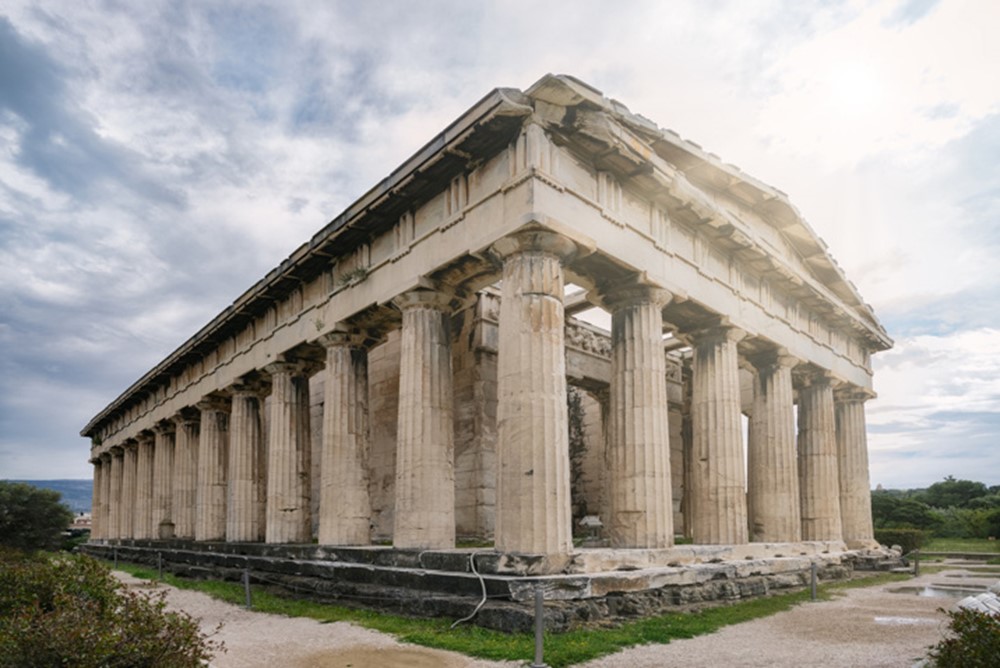Introduction
While Vitruvius was Roman, in De Architectura he shows great respect for the Greek thinkers and architects that came before him. In fact, much of the writings were directly collected from these Greek thinkers and put into the book rather than being written by Vitruvius himself. The Greeks are often credited with being the first people to truly standardize a set of architectural “rules”. The Greek style is categorized into 3 orders: Doric, Ionic and Corinthian, which are most easily identifiable by their columns.
In this post we will explore the Doric order.
History
It is only right that we kick this off with the Doric order of Architecture, as it is generally agreed upon as the oldest of the orders, dating back to the western region of Greece in the 7th century BC. Doric columns tend to be the simplest of the Greek orders, generally not including a base and having a very plain, capital made up of a square abacus and rounded echinus. Doric columns were always fluted, with each column containing 20 parallel flutes, coming to a sharp pointed edge referred to as an arris. Vitruvius describes the Doric order as the “masculine” order, based on the proportion of man, it tends to be shorter and stockier, giving off a look of strength and weight. In applications where columns are “superposed” (meaning each story of a building uses a different order, such as the Colosseum) the Doric order is found on the bottom floor, being the “strongest” in appearance.
If you are interested in getting Doric Columns of your own, you can shop ours here, or design your own column and a product specialist will contact you to find the perfect solution for your project!
Doric Column Sizing
One of the key, defining characteristics of each order is the proportionate relationship between the height and diameter of the column. In the case of the Doric order, the columns are intended to give off a strong, heavy-duty appearance so it is generally the widest of the orders, with the height of the column being 4-8 times its diameter.
For example, if your column is 8’ in height its diameter should be between 12” – 24”.
Famous Examples
The most iconic example of the Doric order is the Parthenon, a temple to the Greek Goddess Athena built in 5th Century BC. The Parthenon contains 46 outer columns and 23 inner columns, each one measuring 6.2 feet in diameter and 34 ft in height.

The Temple of Hephaistos is considered the best-preserved temple from the Ancient Greek period. It contains 35 outer columns and 4 inner columns, all in the Doric style.

A modern example of Greek Doric columns can be found at the Lincoln Memorial in Washington D.C. This memorial contains 36 columns, one for each state in the Union at the time of Lincolns death. Each column is 44 feet tall with a diameter of 7 feet 5 inches.

Sources
The Gutenberg Project
Introduction to Doric Columns
The Timeless Beauty of Ancient Greek Architecture
Greek Architectural Orders


